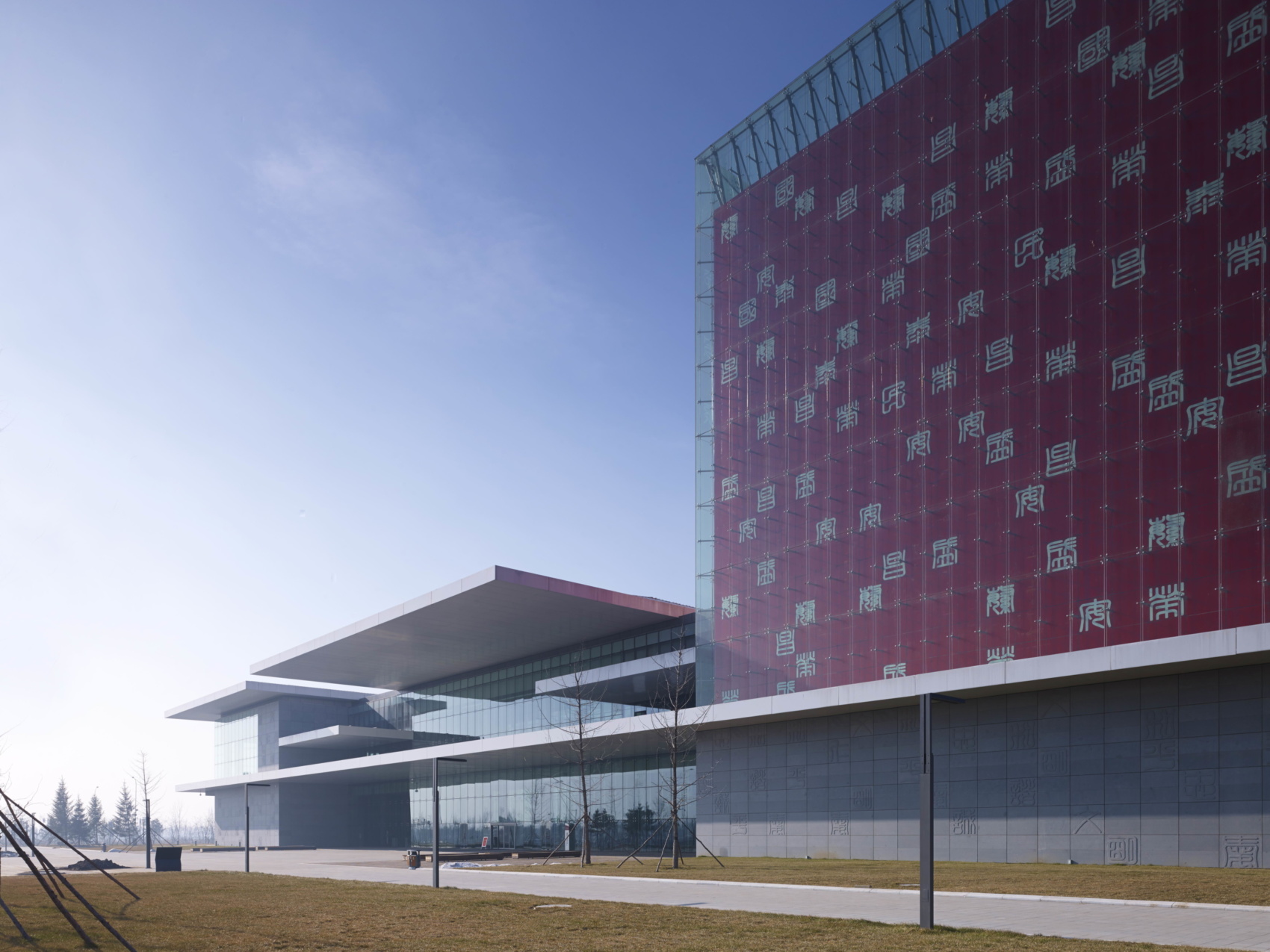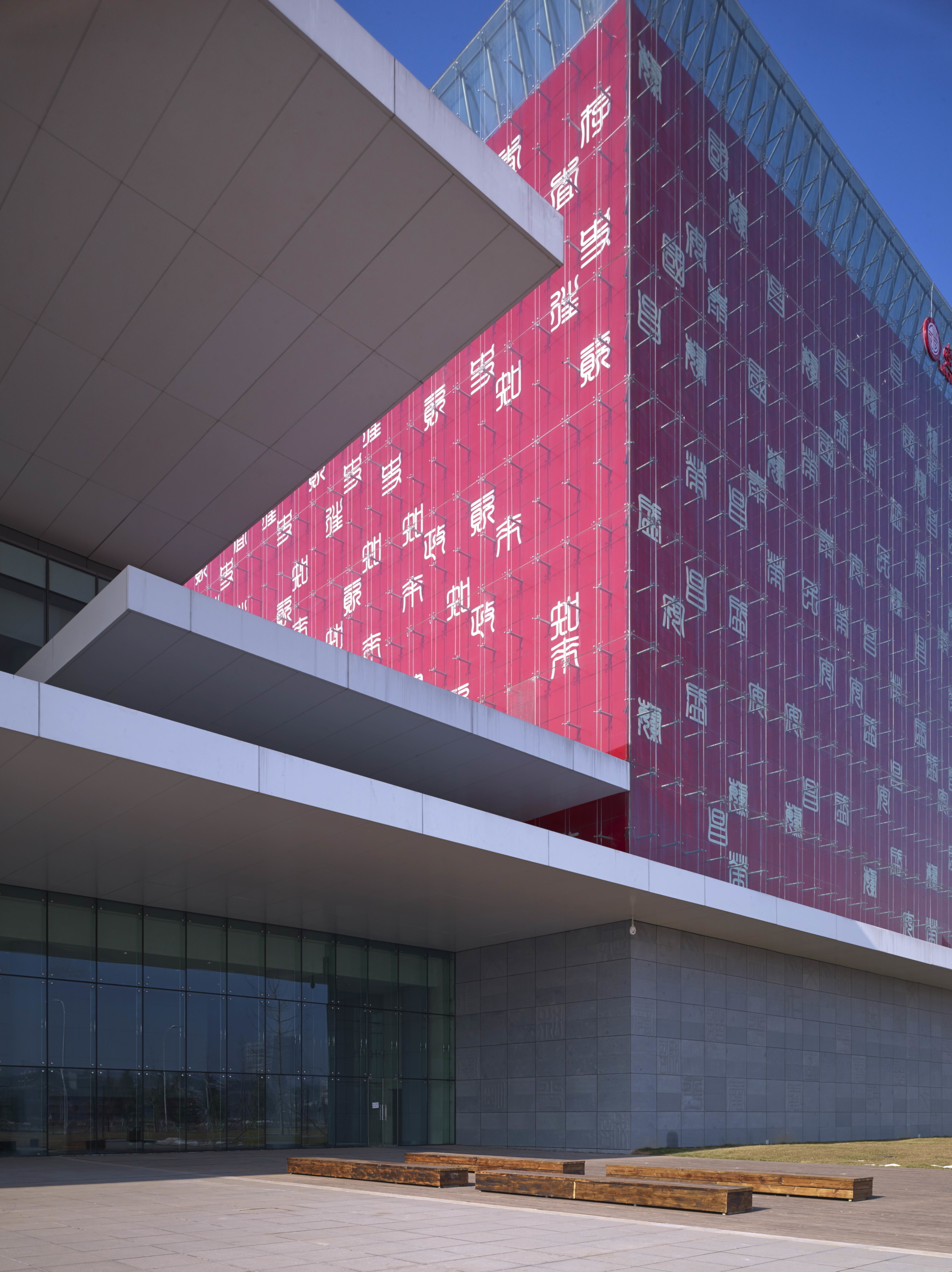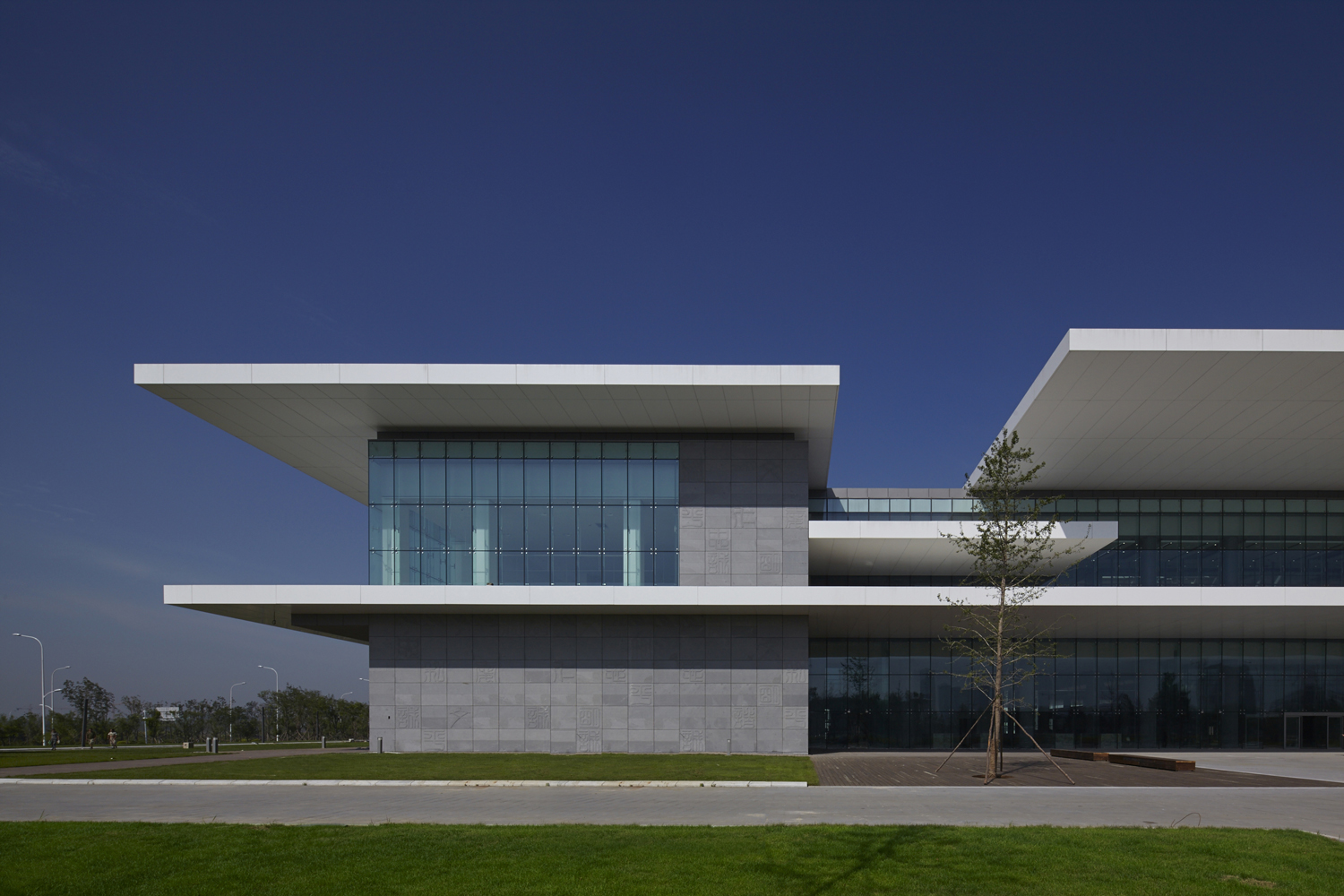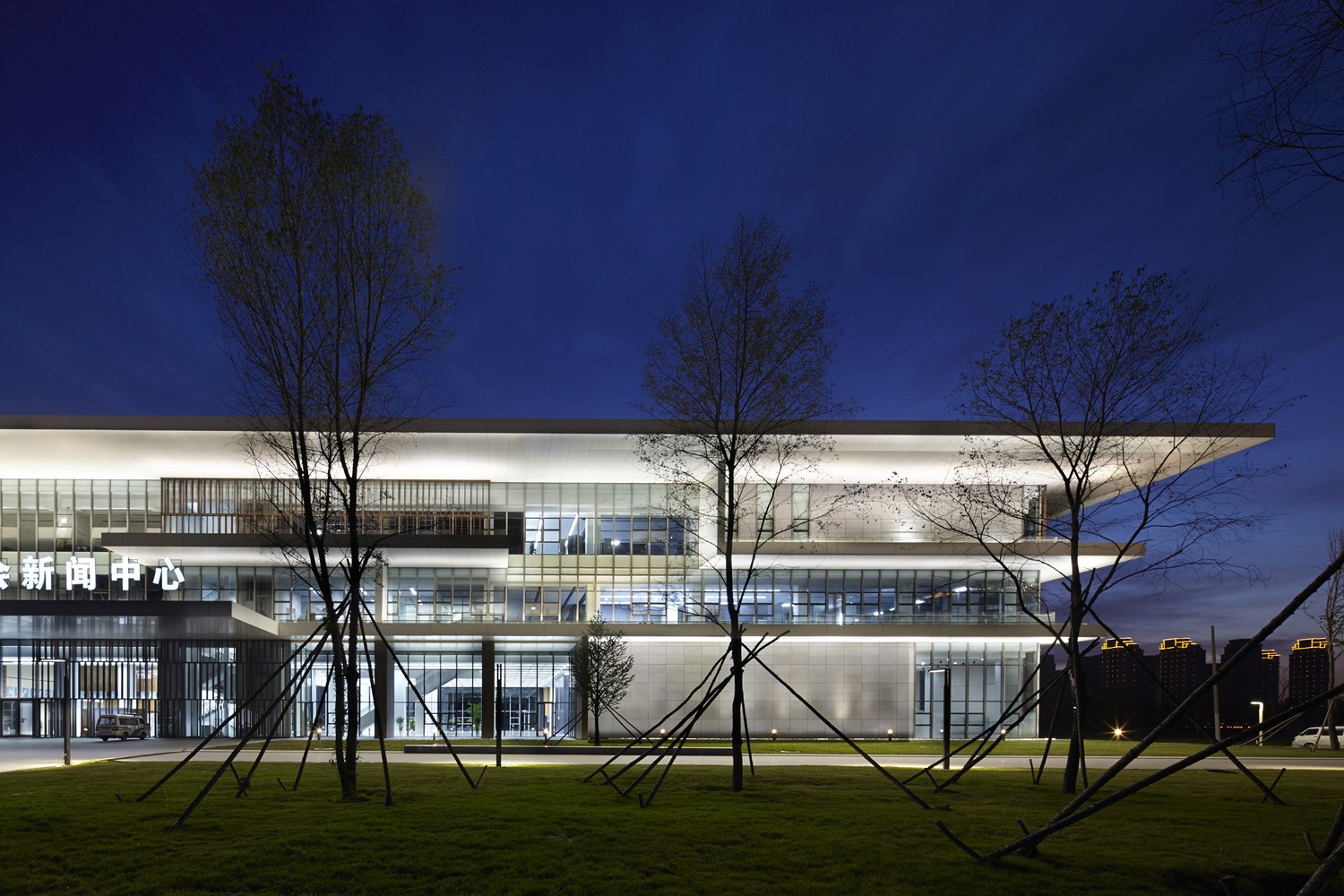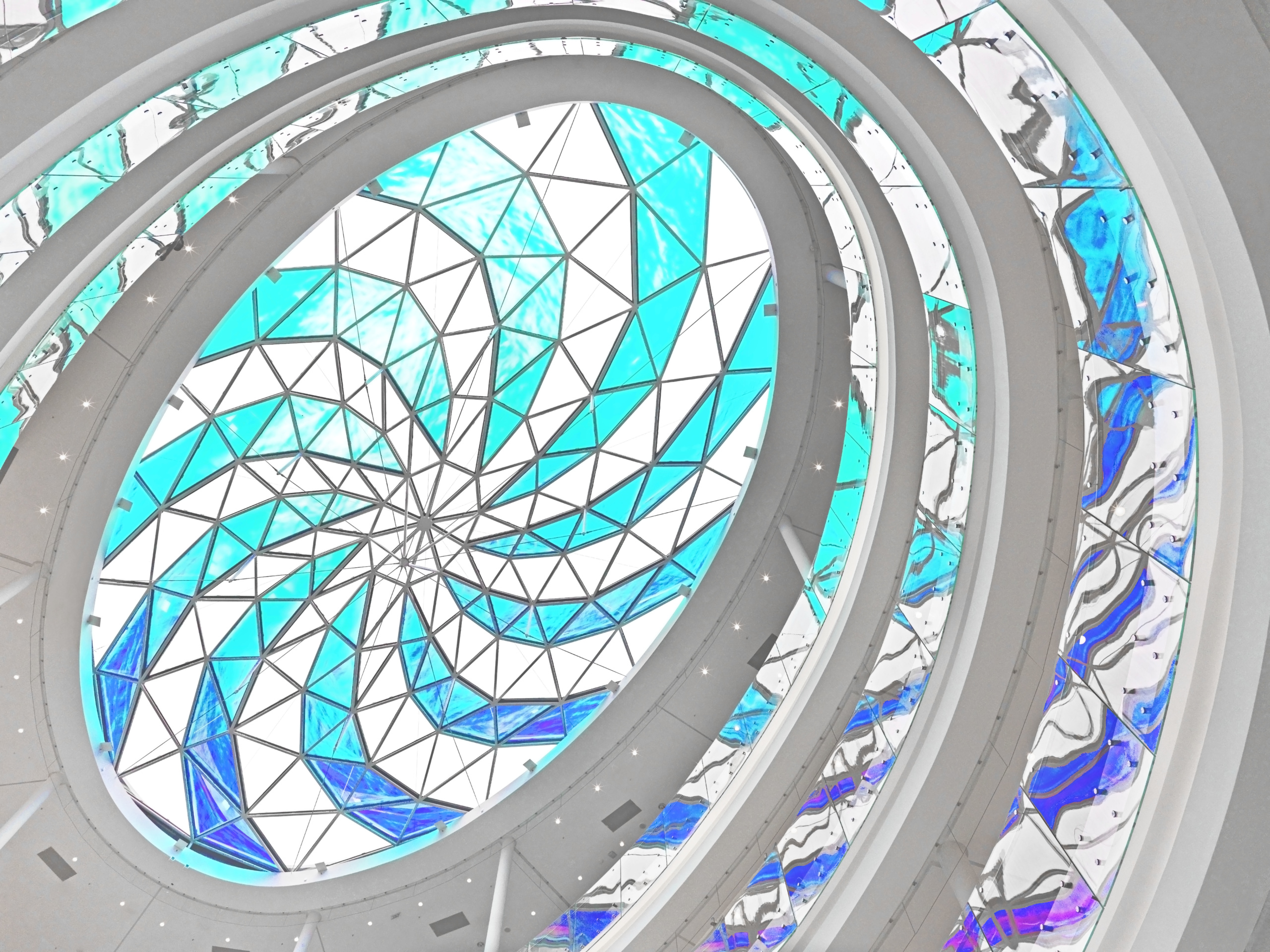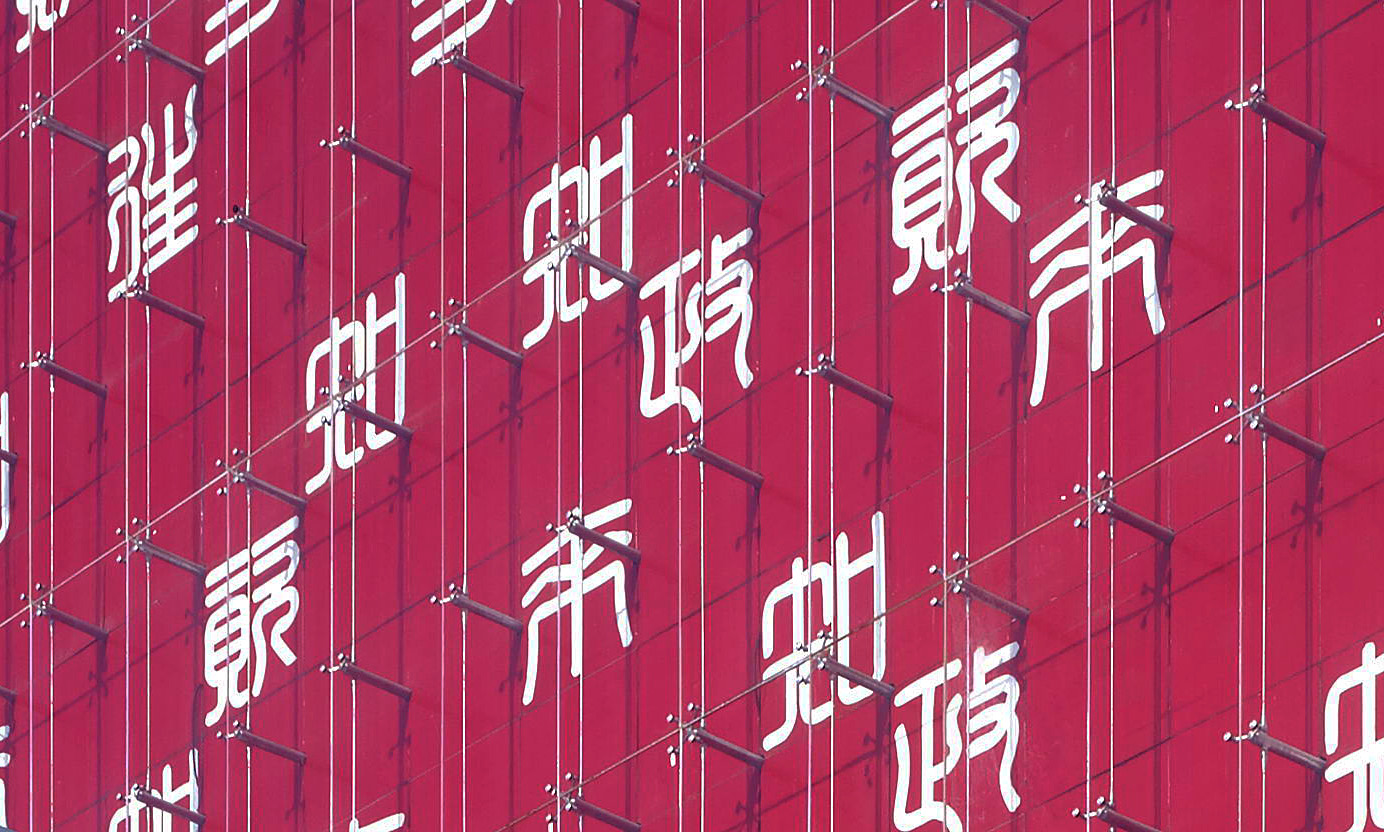
Liaoning Archives Centre
The general principle was the creation of an urban space in a variety of forms within a vast public square, flanked on either side by two ensembles, each consisting of two large buildings. Landmarks on a monumental scale, marking the urban landscape and fulfilling the desire to disseminate culture on a wide scale to the local population, each of these four buildings is consistent with the rules of communal design and accommodates a function that serves the overall programme. They have very nearly the same floor surface area, developed on four levels plus a basement level. These elements, striking in their simplicity, accentuate the intentionally rectilinear urban layout, as well as showcasing the public square.
On this common basis, each building elaborates upon a distinctive architectural feature, inspired by its own programme and instantly intelligible as such. Thus, the Museum of Science and Technology incorporates a geode; its façade is pixellated and engraved with numbers. The Library is characterised by a brise-soleil optimising the use of natural light, and the museum is distinctive for its deployment of exhibition spaces. The Archives building’s distinguishing feature is a new nine-storey tower dedicated to document storage and preservation. A key aspect of the architectural design is the incorporation of one of the four great inventions of ancient China, calligraphic characters, chosen in collaboration with the Archives’ representatives on the basis of historical research.
This concept is applied on every scale. Seen from the sky, the building recalls the Chinese character hui, meaning to return, by way of illustrating a return to the site’s millennial history. Elements of calligraphy are incorporated into the details of the façade (engraved stone, white motifs on the red background of the tower). The tower is fitted with a double façade, the glass wall protecting the red aluminium volume as well as the most precious treasures held in the archives.
